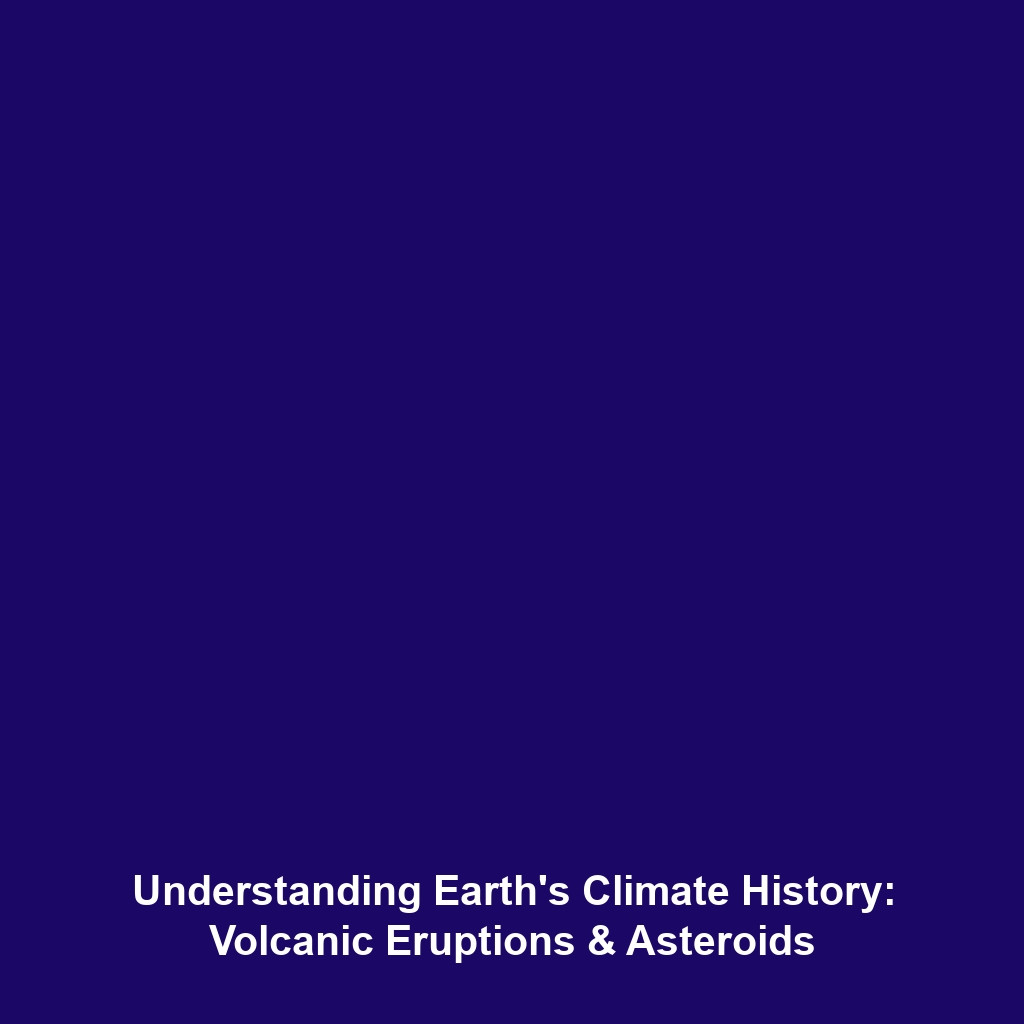Large Volcanic Eruptions and Their Temporary Cooling Effects
Introduction
Large volcanic eruptions represent significant natural events that can deeply influence the Earth’s climate. When these eruptions occur, they inject vast quantities of sulfur dioxide and ash into the stratosphere. This process leads to the reflection of sunlight back into space, temporarily cooling the planet. Understanding these events is crucial within the broader context of Climate History, as they offer insights into natural climate variability and the Earth’s resilience against warming trends. Exploring the effects of volcanic eruptions on climate helps us establish a foundational understanding of historical climate patterns and potential future scenarios.
Key Concepts
Volcanic Eruption Dynamics
Volcanic eruptions can release enormous amounts of gases and particulates into the atmosphere. The primary gas, sulfur dioxide (SO2), reacts in the atmosphere to form sulfate aerosols, which are capable of reflecting sunlight. This phenomenon is essential in understanding:
- The mechanisms of climate cooling.
- The historical frequency and magnitude of eruptions.
- The interactions between volcanic activity and climate systems.
Impact on Climate History
Throughout history, significant eruptions, such as Mount Pinatubo in 1991 and the eruption of Krakatoa in 1883, have been linked to notable climate anomalies. Evidence from ice cores and sediment layers provides a detailed account of climate variations caused by such eruptions, demonstrating how the Earth’s climate responds to natural phenomena.
Applications and Real-World Uses
The study of large volcanic eruptions and their climatic consequences has practical applications in various fields:
- Climate Modeling: Understanding previous eruptions helps improve climate models, aiding predictions of future climate scenarios.
- Disaster Preparedness: Knowledge of geological activity informs policies and preparedness strategies in volcanic regions.
- Public Awareness: Education on the relationship between volcanic eruptions and climate is crucial for fostering informed communities regarding natural disasters.
Current Challenges
Despite advancements in volcanic study, several challenges persist in understanding their impacts on climate:
- Data Limitations: Historical data on eruption frequency and intensity may be incomplete or inconsistent.
- Modeling Complexities: Integrating volcanic impacts into existing climate models presents technical difficulties.
- Geographical Variability: Different regions respond uniquely to volcanic effects, complicating the establishment of universal patterns.
Future Research and Innovations
Future research efforts are likely to focus on more advanced methodologies to study volcanic eruptions, including:
- Enhanced Satellite Monitoring: Utilizing next-gen satellite technology to better track volcanic emissions and their atmospheric effects.
- Improved Climate Models: Developing more precise models that can integrate the impacts of volcanic eruptions into climate forecasting.
- Interdisciplinary Approaches: Collaborating across various scientific disciplines to broaden the understanding of eruption-induced climate change.
Conclusion
In conclusion, large volcanic eruptions play a significant role in shaping the Earth’s climate history through the injection of sulfur dioxide and ash into the stratosphere, resulting in temporary cooling effects. Understanding these events is vital for grasping historical climate variability and aiding in future climate predictions. Continued research and advancements in technology are essential to overcoming the current challenges related to volcanic impacts on climate. For more insights, consider exploring our articles on Climate Change and Volcanology.

